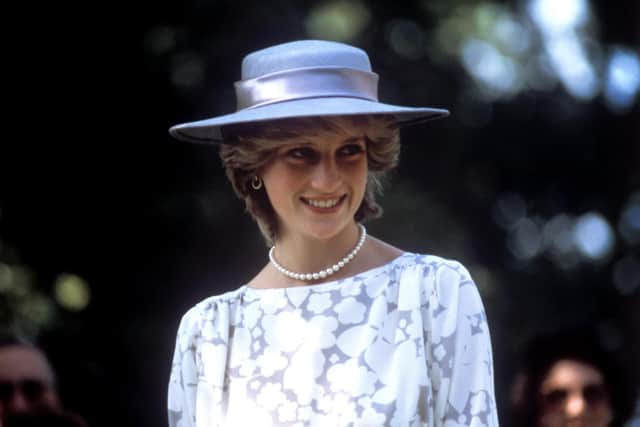Princess Diana death: How fatal crash changed the Royal Family 25 years on
It was a tragedy that shocked the world and brought an unprecedented trauma to the Royal Family.
Next year will mark the 25th anniversary of the death of Diana, Princess of Wales, whose life and untimely death led to a dramatic reshaping of the Roy al Family’s relationship with the British public.
Advertisement
Hide AdAdvertisement
Hide AdDiana died at the age of just 36 in the early hours of August 31, 1997, at Pitié-Salpêtrière hospital from injuries she suffered in a car crash in the Pont de l’Alma tunnel in Paris.


Her partner, Dodi Fayed, and their driver, Henri Paul, were pronounced dead at the scene.
Their bodyguard, Trevor Rees-Jones, was the only survivor when the Mercedes they were travelling in clipped another car and careered into a pillar.
The then-Prime Minister, Tony Blair, caught the national mood on the day of Diana’s death when he coined the phrase, “the People’s Princess”.
Advertisement
Hide AdAdvertisement
Hide AdBut the initial response from the Queen, who at the time did not enjoy the popularity she does today, was seen as detached.
Tabloid headlines reflected the public’s sentiment, with The Daily Mirror famously blaring: “Your people are suffering, Speak to us Ma’am”.
A national broadcast by the Queen on September 5 eased public frustration.
The following day more than a million people lined the streets as Diana’s funeral procession travelled from Kensington Palace to Westminster Abbey.
Advertisement
Hide AdAdvertisement
Hide AdThe extraordinary outpouring of grief reflected the appeal of a princess whose public style differed markedly from the traditional stiff and formal Royal approach.
Elisabeth Basford, the Barnsley-based author of Princess Mary: The First Modern Princess, said: “I think Diana’s most significant contribution to the Royal Family was that she brought in a much more tactile form of engaging with the public.
“She did champion the fight against HIV and when she shook hands with someone who had HIV, it helped to break down the stigma in the media. The charities she worked with all talked about her hands-on approach and genuine care for the people she met.
“The public perceived her as a wonderful mother and in their eyes she was bringing in a more hands-on approach to raising royal children.
Advertisement
Hide AdAdvertisement
Hide Ad“When she embarked on foreign tours with Charles, she broke tradition by taking her baby, William – whereas previously Royal parents left their children in the care of a nanny. Diana tried to make their childhood as normal as she could. She took her boys to theme parks and McDonald’s.”
Princess Mary had organised gifts for servicemen in the First World War and trained as a nurse, but lived without the kind of media glare that covered most days of Diana’s public and often private life.
While much of that media coverage was criticised for being intrusive, not least the paparazzi who had fatefully followed her into the Paris tunnel, many commentators, including Ms Basford, also point to Diana’s ability to use coverage to her favour.
And her engagement with the public is one of her most significant legacies, as her life and the impact of her death meant the Royal Family had to become less remote.
Advertisement
Hide AdAdvertisement
Hide AdIt is an approach perhaps best illustrated by her children’s approach to public life, before Prince Harry announced in January last year that he was stepping back from frontline Royal duties.
Ms Basford said: “Her sons are a huge credit to her. Both William and Harry have always shown natural ability to connect with people on many levels.”
A six-month inquest that concluded in 2008 found Princess Diana and Dodi Al Fayed were unlawfully killed due to the “gross negligence” of driver Henri Paul and the paparazzi who dogged their car before it crashed.
The inquest jury also found Mr Paul’s drink-driving and a lack of seatbelts contributed to their deaths.
Advertisement
Hide AdAdvertisement
Hide AdConspiracy theories had long swirled around the cause of death, but during the inquest’s summing-up, the coroner, Lord Justice Scott Baker, told the jury there was “no evidence” that the Duke of Edinburgh ordered Princess Diana’s death or that it was organised by MI6.
Comment Guidelines
National World encourages reader discussion on our stories. User feedback, insights and back-and-forth exchanges add a rich layer of context to reporting. Please review our Community Guidelines before commenting.
